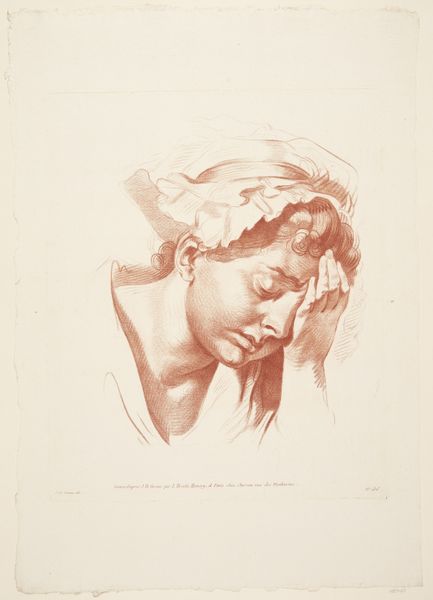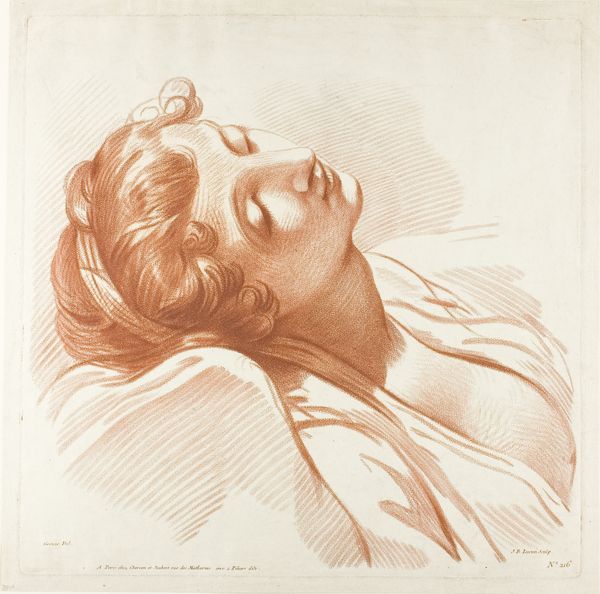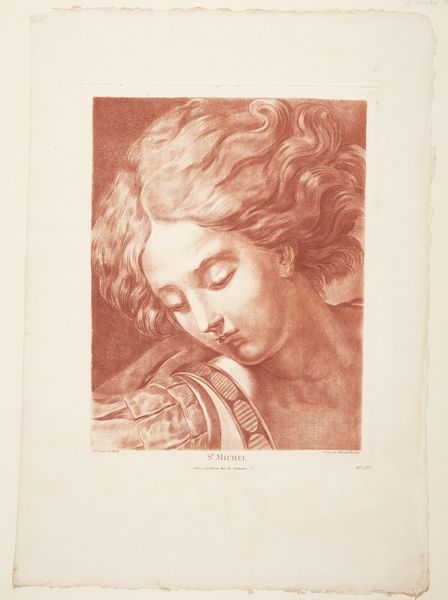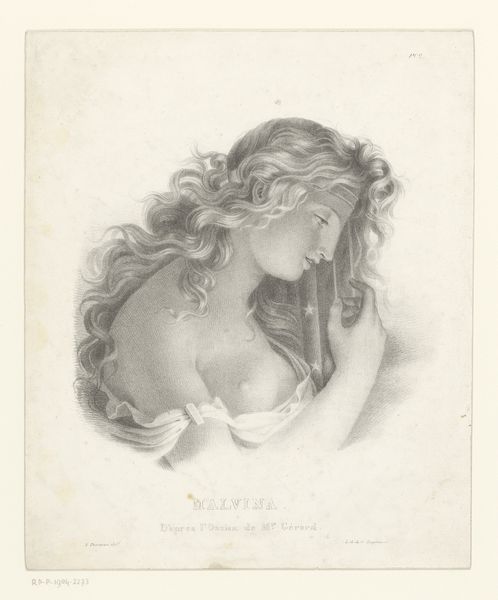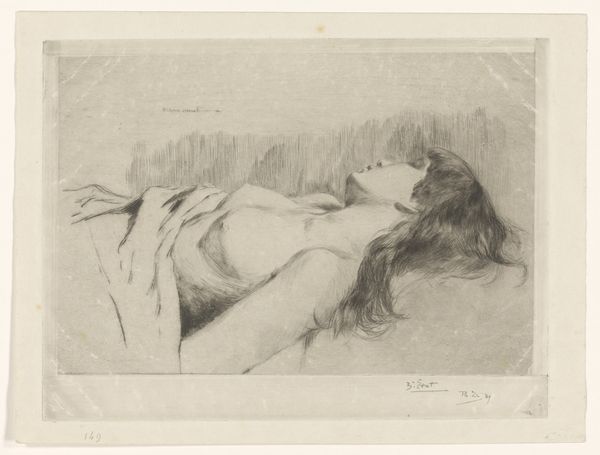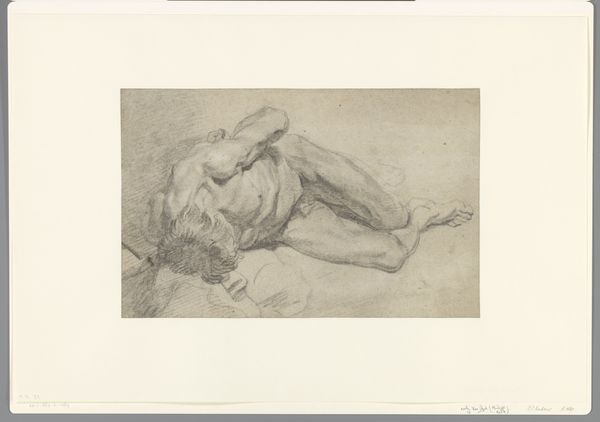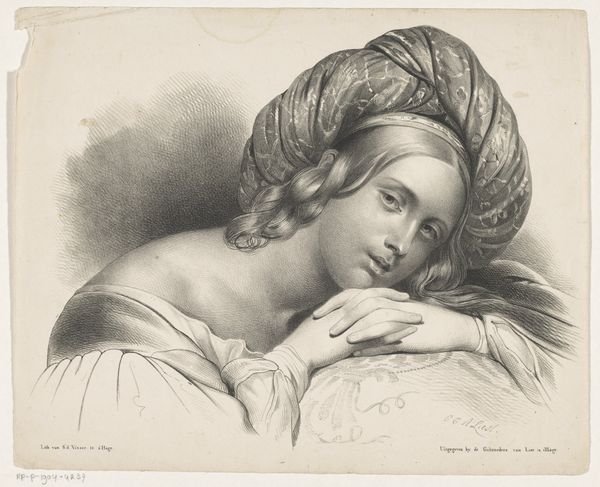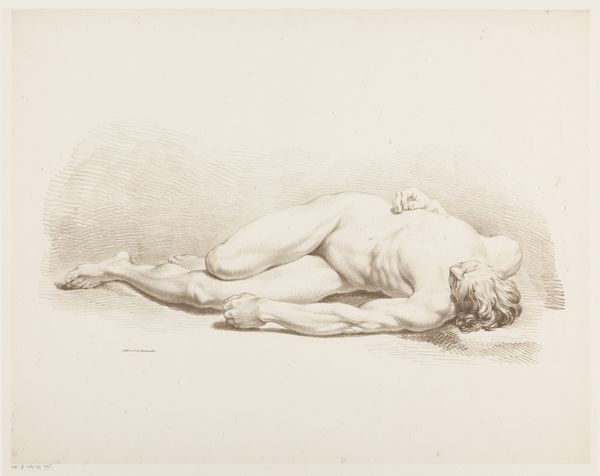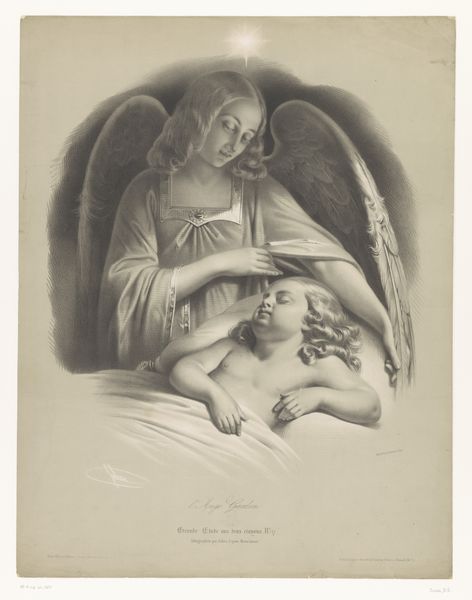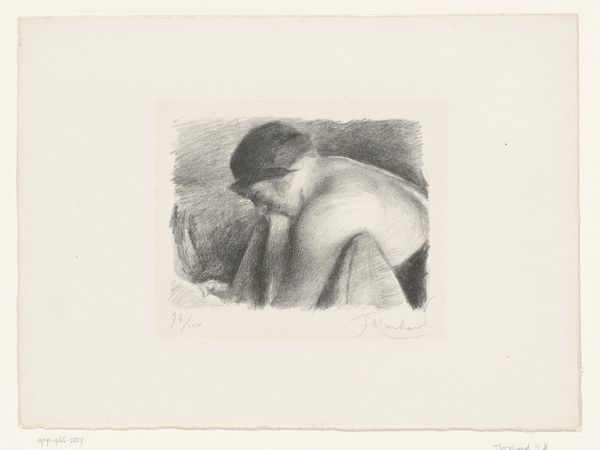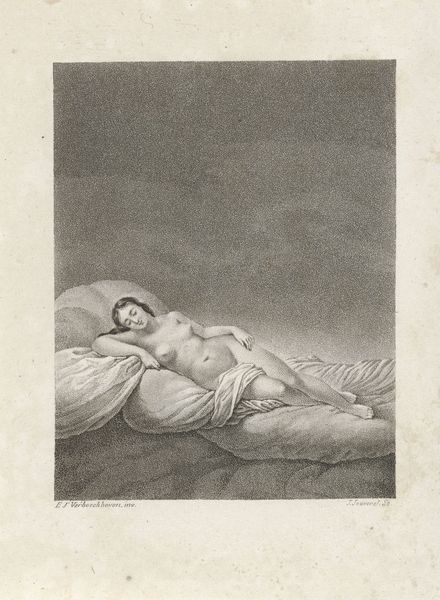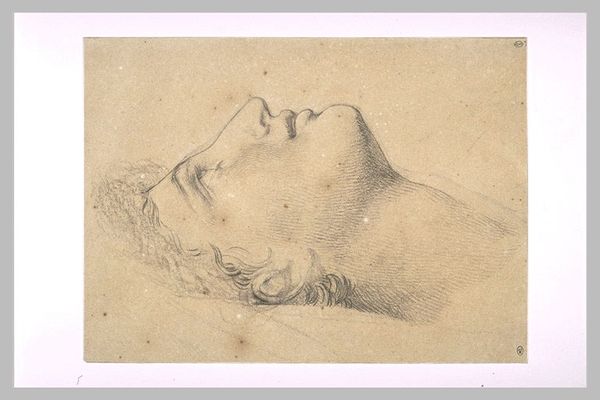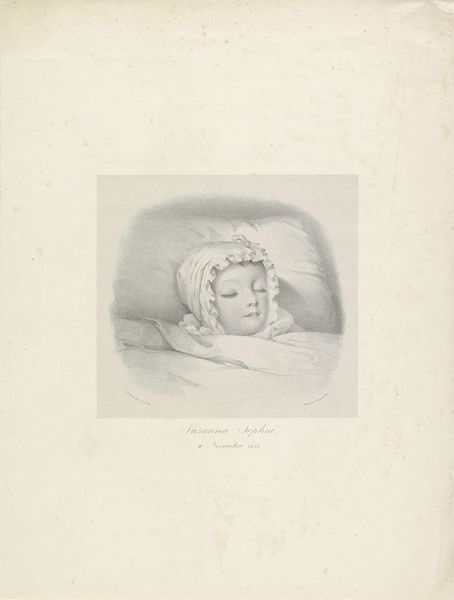
engraving
#
portrait
#
figuration
#
romanticism
#
history-painting
#
engraving
Dimensions: height 466 mm, width 585 mm
Copyright: Rijks Museum: Open Domain
Curator: The engraving we are looking at, titled "Chactas," was completed in 1812 by B. Lepage after an original by Girodet. Editor: It's a powerful image; there’s a stark emotionality in the figure's pose. I’m immediately struck by the apparent despair, this total collapse inwards. Curator: Indeed. Engravings, especially during this era, were crucial for disseminating images and ideas. Consider Lepage's labor here; the painstaking work required to translate paint into precise lines. This image would have been reproduced for wider circulation, shaping perceptions about its subject. Editor: Absolutely, and in considering this piece through an activist lens, it's important to ask: who was this ‘Chactas’, and what narratives are being constructed around his image? The engraving is derived from Chateaubriand's novel, "Atala," portraying him as a noble Native American. However, is this romantic portrayal genuinely respectful, or does it merely exoticize and further marginalize indigenous peoples? Curator: The materials used for the print would have been chosen to facilitate that distribution, to be readily accessible. And the paper stock itself also informs how the image would have been received, both in terms of cost and its anticipated longevity as a multiple. Editor: It is also essential to examine the gaze through which "Chactas" is presented. It appears intended for a European audience and subtly reinforces power dynamics between the colonizer and the colonized. Even if intending to portray dignity, the piece still centers a Western perspective. The vulnerability of the posture underscores a particular colonial viewpoint on Indigenous men. Curator: To add to that, consider how printmaking democratized art consumption in a certain sense, creating reproductions that were more affordable and accessible than paintings, altering its audience to new social strata. Editor: Examining its circulation exposes how cultural narratives are manufactured and commodified, reinforcing specific worldviews. Despite Lepage's craftsmanship, the underlying question persists: how does this representation impact the broader struggle for indigenous representation and sovereignty? Curator: Ultimately, the dialogue between materiality and critical cultural engagement shows us how art's influence stretches far beyond the aesthetic realm, revealing social and political landscapes. Editor: Precisely; by considering the circumstances of its production, distribution, and historical context, we can more fully consider the image’s power.
Comments
No comments
Be the first to comment and join the conversation on the ultimate creative platform.
